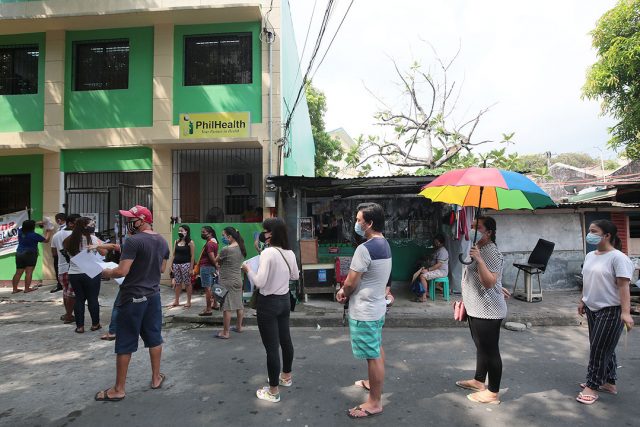Video Game Review
Guardians of the Galaxy
Sony PlayStation 5
Super Robot Wars 30
Personal Computer via Steam
Disgaea 6: Defiance of Destiny
Nintendo Switch
Square Enix and Eidos Montreal’s Guardians of the Galaxy might not have the participation of the movie’s cast, but it exudes no small measure of charm all the same. Following the story of Star-Lord and his ragtag bunch of misfit friends, it throws you into the thick of things. You must brawl, shoot, and explore your surroundings as best as you can, all while enjoying the excellent writing.
It’s clear from the onset what Guardians of the Galaxy focuses on. Centered around protagonists Star-Lord, Gamora, Rocket, Groot, and Drax, it puts its proverbial best foot forward by bringing all these unique personalities to life in-game. The witty banter between them during cutscenes or while in combat is all in character, and their unique abilities and animations help set them apart even further. Their gags and dialogue are consistent, with alternating goofy and serious moments dotted throughout the game to keep the tone interesting.
These characteristics also work to help you. You control only Star-Lord, but you’re able to ask the assistance of the others to assist you during fights, or to help solve the plethora of environmental puzzles in Guardians of the Galaxy. Someone like Drax uses his brute strength to take opponents down, but can also lift heavier objects to help you proceed. The same goes with Groot, who uses elongating limbs to help bridge gaps or provide crowd control.
In fact, the Devil-May-Cry-like combo system encourages you to actively work with your team. By using their special abilities while simultaneously fighting and mixing in your own combos, you build towards striking against the game’s stronger foes. The mechanics are pretty neat, if uncomplicated, and really hammers home the point that Guardians of the Galaxy isn’t so much just Star-Lord but that of the entire squad proving that it’s collectively greater than the sum of its parts.
When you’re not bashing in enemies, you’re dealing with the environments. None of them are particularly challenging to navigate, but exploring tends to reward you with additional lore and fanservice, letting you come out with journals, sneak peeks, and references that will make any Guardians of the Galaxy comic book fan squeal with joy. The environments themselves also never get stale, having you traverse abandoned space ships, infested caverns, and alien worlds. You’re mostly set on a linear path, but the areas you do get to explore look absolutely beautiful. It’s got a fair amount of content to it as well, with first-time playthroughs lasting about 15 hours to 16 hours depending on how thorough and skilled you are.
Really, the only thing holding Guardians of the Galaxy back is its repetitive nature. The combat and exploration are pretty decent as a whole, but they can get a little draining, especially against the tougher enemies you might encounter. Fights aren’t difficult, but they do last quite a while. And while you have a decent number of upgrades available to kit out the characters and maximize their potential, the combat always feels just a bit lacking as if it’s missing a mechanic or two to spice things up.
That said, its personality is more than enough to carry this single player experience all the way to the end. It might not be a game you’ll replay any time soon, but it’s game you’ll fondly remember if you’re a Guardians of the Galaxy fan. It’s sleek, it’s stylish, it’s witty, and it’s a great take on this lovable band of superheroes.
THE GOOD:
• Knocks your socks off with its great voice acting and witty dialogue
• Solid combat and exploration
• Excellent storyline, with a heady mix of serious plot points and funny jokes
THE BAD:
• Gameplay feels a little too shallow
• Can get repetitive
• Cutscenes can take a while
RATING: 8/10
POSTSCRIPT: It’s hard to narrow down Super Robot Wars 30’s best points. The Super Robot Wars (SRW) series itself is already well known for its tactical gameplay and its clear homage to the mecha animé genre. It wears its inspirations on its shoulders with pride, making it a one-of-a-kind game franchise that’s able to lure in new fans with its deep, engaging, tactical battles and, at the same time, appease old ones with its solid writing. One would expect Super Robot Wars 30 to do the same, and it does. But more than just follow in the footsteps of its predecessors, it openly celebrates the best parts in the series.
Super Robot Wars 30 starts off small, letting players pick the character route they want to traverse initially. However, the roster soon opens up, with different characters from Japan’s most famous mecha franchises eventually becoming available to recruit. These characters bring with them their own unique abilities and skill sets, giving new recruits a specific role to fulfill with very little overlap. It’s up to the player to decide who to use, which characters to bring to each stage, and what strategy to use to achieve victory,
It all sounds pretty simple at first. Many other tactical role-playing games, including those from the Fire Emblem and Disgaea franchises, can lay claim to the same thing. What really sets Super Robot Wars 30 apart is its presentation. Tactical battles look pretty mundane at first, but a significant chunk of SRW’s charm lies in the combat animations and character barks that go with it. Since each character has its own set of weapons and personalities, the animations you have for each attack are all different, each is punctuated by a special intro and snappy quotes. Your attacks differ entirely based on what weapons are used, and effort has been spent to make it seem weighty and impactful.
Just as strong as the combat animations is the gameplay itself. While Super Robot Wars 30 does play pretty safe, there’s no denying that there’s a keen sense of enjoyment to be had when you maneuver your characters through the stage and weather the tide of enemies the game loves to keep sending after you. Care must be given to ensure that characters stay healthy, and the few new options like auto battle come in to help break the monotony during points where victory is all but guaranteed already. This strong emphasis on tactical depth is hard to ignore, and it really cements the game’s foundations. A ton of missions are on offer, each with its own wrinkles depending on when you tackle it, and on which characters you bring. Simply put, there’s just no end to the options you have available to you.
In Super Robot Wars 30, the missions you take are also accompanied by long segments of story exposition, presented in a very visual novel-esque fashion. These might bore someone who simply wants to enjoy the tactical side of the game, but the serious writing helps prop up the story, especially when characters from different franchises get to interact with one another. It’s the little things like this that are the real treats of fanservice for long-time followers of SRW, and the developers know exactly the types of audiences they cater to. Characters do not feel weird or obnoxious; they are instead written according to their in-universe canon, making for some entertaining teamups and drama depending on the progression of the narrative.
If there’s any real criticism to be levied against Super Robot Wars 30, it’s that the mission design can feel lacking on occasion. While SRW’s charm certainly carries a lot of the gameplay, some maps do tend to feel a little repetitive. Thankfully, this is a minor issue on the whole, and the game makes up for this lack of variety with its overall quality.
On the whole, Super Robot Wars 30 is easily one of the best games available on Steam, and while it does carry a hefty price tag, it’s worth every penny if you’re even remotely interested in TRPGs and mechas. For the genre, no other game series comes close.
THE GOOD:
• Has all the charm and intensity of the previous Super Robot Wars games, and more
• Still has the same addictive tactical gameplay setup
• Tons of content to run through
THE BAD:
• Needs more mission/stage variety
• A bit costly in the absence of any sales blitz
Nippon Ichi Software has been making Disgaea games for close to 20 years. Released in 2003, Disgaea: Hour of Darkness was a breath of fresh air, able to laugh at itself and its antics and whole-heartedly dipping into its sillier parts without a care in the world. While other Japanese role-playing games like Final Fantasy delved on serious matters with a serious tone, Disgaea was more than willing to go for extremes: its highly exaggerated damage numbers, its over-the-top comedy, and its light-hearted but still endearing plot.
Disgaea 6: Defiance of Destiny seeks to channel that same energy once more, mustering everything that the series has to offer in a bigger, more exciting, and more ridiculous scale. Its plot is still silly, its combat is still fun, and its tone is still as wacky as ever. All these, combined with some new quality-of-life features, prop up the game’s status as the most accessible game in the franchise yet.
Disgaea 6: Defiance of Destiny follows the tale of Zed the Zombie. This unlikely hero is off to challenge the God of Destruction. Each time, Zed is defeated, but each death he suffers makes him far stronger than before after reincarnation. His attempts and failures slowly empower him, and in his quest to take down his foe, he travels across the various Netherworlds and meets with new companions and new enemies, all while he attempts to bring down his mortal foe.
As far as stories go, Disgaea 6: Defiance of Destiny is nothing out of the ordinary. It’s par for the course in terms of what you’d expect from a Disgaea game. What helps it along, though, is its self-awareness. Much of the latest release in the franchise tends to be silly and exaggerated, but it’s not done in a malicious way. It’s all for fun and games, and never offensive. Instead, it doubles down on its character tropes, and on the series’ running jokes. It might not always make perfect sense, but it’s charming nonetheless, especially for longtime followers of the intellectual property.
Disgaea 6: Defiance of Destiny’s humor also extends to the gameplay. Being the latest Disgaea expansion, it has all the bells and whistles any good Disgaea game will have. Fun and colorful characters, plenty of interesting and challenging maps to play on, and a plethora of classes to use and abilities to manipulate. These are all standard fare for the series, and the solid turn-based gameplay it has makes it a good anchor for any newcomer to latch onto.
What really stands out are some of the new features Disgaea 6: Defiance of Destiny introduces. Chief among them is Demonic Intelligence, which helps cut down on the micromanagement previous titles in the series needed you to do to get your turns done. You won’t always be inclined to use it, especially when you’re trying to get the most out of your turns or need specific strategies to employ, but it offers you flexibility to streamline some of the tedium. By presetting how certain units you have can react, things like striking nearby foes or using skills when needed are automatically done, and these little plusses do go a long way.
That’s because Disgaea 6: Defiance of Destiny, as with its predecessors, thrives on replay and repetition, and on your own willingness to “break” your characters. With an absurd level cap that can reach upwards into the thousands, it encourages you to go crazy with your characters. Go for bigger numbers, grind for better stats and gear, and keep the bar constantly rising by continually challenging tougher foes. The sky’s the limit in Disgaea 6: Defiance of Destiny, and in a JRPG where stats are king, the bar can be as high as you want to set it.
This all comes down to Disgaea 6: Defiance of Destiny being an easy title that both veterans and newcomers to the series can enjoy. With a ton of replay value and a lot of post-game and downloadable content to bite down on, it offers plenty of options that allow you to have fun with your game. You’re basically free to enjoy it as you please — that is, if you can get past some of its limitations. For instance, its graphics might turn some people off. While the game does still use two-dimensional art assets, the new 3D models that appear on the map can be jarring. The animations can be nice and entertaining, but they do feel a little chunky and fat when compared to the sprites used in the previous games.
In addition, Disgaea 6: Defiance of Destiny on the Nintendo Switch presents with some bad framerate issues when it is on anything but performance mode — a surprise considering that the game doesn’t seem to be a resource hog. While it’s a turn-based game and doesn’t really need a smooth framerate to be playable, having a bad one during gameplay is quite off-putting, especially for those used to being treated to a smooth 60 frames per second.
On the whole, Disgaea 6 is a fun title that takes advantage of better QOL features to help reduce the tedium of grinding. For the more discriminating gamers, however, this becomes a moot point in the face of its poor optimization. It’s a fun title to play, and will still hold your attention for hours on end, but it’s a game that simply adds very little to the Disgaea formula, and plays things on the safe side. Bottom line, it’s a Disgaea title, and therefore still a must-buy — although it could have been better in the way that Disgaea 5: Alliance of Vengeance was relative to the immediate past release.
THE GOOD:
Still a solid Disgaea game, with hundreds of hours of content to play through
Enjoyable humor and writing, with expressive and memorable characters
Flexible approach to gameplay allows for plenty of ways to experience it, while also streamlining a lot of the grind
THE BAD:
Dipping framerates on the Switch
Not much “new” in the way of mechanics
Missing features from the previous games
RATING: 9/10
THE LAST WORD: Sony Interactive Entertainment Singapore has announced the opening of preorders for Gran Turismo 7, slated for release on March 4. Customers who preorder any physical edition of the game will receive digital contents of 100,000 CR (in-game credit) and a three-car pack, as well as stand a chance to receive a metal/leather keychain. Standard editions are pegged at P3,490 for the PS5 version and P2,990 for the PS4 version, while the 25th Anniversary Edition carries a price tag of P4,490 on either platform.
Sony has likewise unveiled the upcoming launch of the PlayStation VR2 and the complementary VR2 Sense Controller. The new iteration of Sony’s virtual reality headset boasts of true next-generation experience with high-fidelity visuals, new sensory features, and enhanced controller and eye tracking. In what is sure to be welcomed by current PS VR owners, the VR2 likewise features a simplified single-cord setup.
Highlighting the launch of the VR2 is the release of Horizon Call of the Mountain, featuring a story distinct from Horizon Forbidden West, out next month, and told through the eyes of a new character. The series’ virtual reality offering is designed to push the VR2’s hardware to its limits.







 LOS ANGELES —
LOS ANGELES —




